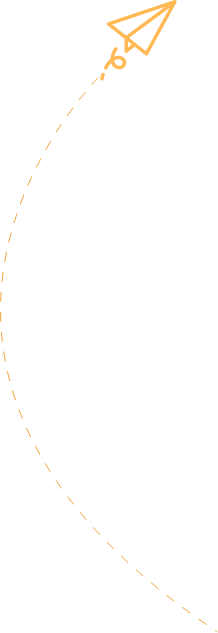In a world where AI can whip up essays faster than a caffeinated squirrel, figuring out if a piece of writing comes from ChatGPT can feel like searching for a needle in a haystack. With the rise of AI-generated content, it’s crucial to know whether you’re reading the musings of a machine or the heartfelt thoughts of a human.
But fear not! There are ways to uncover the truth lurking behind the text. Whether you’re a teacher trying to catch a cheeky student or just someone curious about the origins of an article, understanding how to spot AI-generated content can be your secret weapon. Dive in and discover the telltale signs that’ll help you distinguish between human creativity and robotic ramblings.
Table of Contents
ToggleUnderstanding ChatGPT
ChatGPT, an artificial intelligence tool developed by OpenAI, generates text based on input. Educators and readers alike must recognize its features to distinguish it from human writing.
What Is ChatGPT?
ChatGPT is a language model designed for generating human-like text. It uses deep learning algorithms to create responses to user prompts. Providing a wide range of applications, this tool supports conversation, content creation, and educational purposes. Users can engage with ChatGPT in various contexts, experiencing its adaptability.
How Does ChatGPT Work?
ChatGPT employs a transformer-based architecture to process and generate language. It analyzes vast datasets, learning patterns in text and context. Each generated response relies on prior input and context cues, creating coherent dialogue. Depending on user prompts, it can vary in style, tone, and complexity, making interactions feel natural.
Identifying AI-Generated Content
Recognizing AI-generated content requires understanding specific characteristics. Several features distinguish text crafted by AI tools like ChatGPT.
Key Features of AI Writing
AI writing often exhibits consistency in grammar and punctuation, which can deviate from human imperfections. Patterns in responses reveal a structured approach, utilizing formulaic phrases or repetitive structures. Lengthy outputs frequently contain a wealth of information yet may lack depth in critical analysis. While AI can mimic human-like fluency, it sometimes lacks emotional nuance or personal anecdotes, leaving it feeling unrelatable.
Differences Between Human and AI Writing Styles
Human writing conveys a unique voice, integrating personal experiences that shape individual style. Readers often notice varied sentence structures and use of idiomatic expressions that reflect cultural backgrounds. In contrast, AI-generated text maintains a more uniform tone. Omitting personal insight leads to a lack of genuine emotional resonance that human writers typically embed in their narratives. Evaluating these aspects helps differentiate between the two writing types.
Tools and Techniques for Verification
Identifying AI-generated content requires various tools and techniques. These methods enhance the ability to discern authenticity in writing.
Automated Detection Tools
Several automated tools exist for detecting AI-generated text. These tools analyze writing patterns and highlight characteristics typical of AI outputs. Popular software includes Grammarly, CopyLeaks, and GPT-2 Output Detector, which flag content that might exhibit AI traits. Users should consider text length and complexity, as AI-generated material often features repetitive phrases and unusually structured sentences. Relying on multiple tools increases accuracy, providing a better insight into whether a passage is human-generated or AI-created.
Manual Analysis Methods
Manual analysis offers an essential layer of verification. Readers should examine the writing for emotional depth and personal anecdotes, which are often absent in AI outputs. Analyzing stylistic elements like sentence variety and use of idioms ensures a thorough evaluation. Observing how well the narrative connects with real-life experiences can help emphasize the human touch. It’s beneficial to compare the writing against known human-generated texts, enhancing the ability to spot AI tendencies. Combining both manual and automated methods strengthens verification efforts and improves discernment skills.
Limitations of Detection Methods
Identifying AI-generated text presents several obstacles. Understanding these limitations can enhance detection effectiveness.
Challenges in AI Detection
Detecting AI-generated content proves difficult due to the complexity of language models. Human writers often express ideas in unique ways, while AI tends to generate text that mimics patterns from its training data. Most detection tools rely heavily on specific characteristics, which may not encompass all nuances of AI writing. For instance, subtle differences in tone and style can elude automated systems. Additionally, AI technology continuously improves, making previously identifiable patterns less distinguishable. Users often find that reliance on a single detection method can yield inaccurate results. Therefore, employing a combination of tools becomes crucial for enhancing detection accuracy.
Evolving Nature of AI Writing
AI writing evolves rapidly, complicating detection efforts. New updates to models like ChatGPT frequently introduce changes to output styles and structures. These alterations can obscure previously recognized identifiers of AI-generated content. Furthermore, AI tools increasingly adopt techniques that promote more human-like qualities, complicating straightforward assessments. Writers contribute to this evolution by integrating AI into their workflows, blurring the lines between human and machine-generated text. As a result, over time, distinguishing features may shift or disappear entirely, making consistent detection challenging. Hence, staying informed about the latest developments in AI technology is essential for accurate detection.
Identifying whether content was generated by ChatGPT or another AI tool requires a keen eye and the right techniques. By understanding the distinct characteristics of AI writing and utilizing both automated detection tools and manual analysis, readers can enhance their ability to discern authenticity.
As AI technology continues to evolve, staying informed about new developments is crucial for accurate detection. With the right knowledge and resources, individuals can navigate the complexities of AI-generated content effectively, ensuring they engage with genuine and relatable writing.




